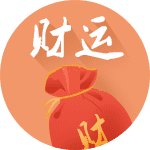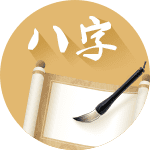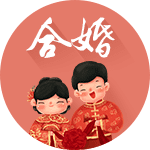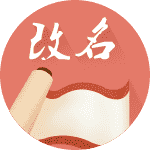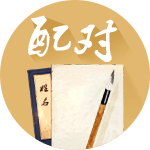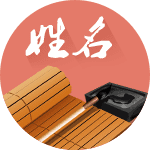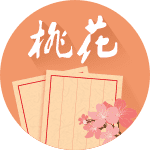四大名绣英文介绍 四大名绣中英文简介
发布时间:2017年08月23日 14:14:13 作者:网络
刺绣是中国传统工艺中有名的文化,在中国有名的刺绣有四大名绣,分别是四川的蜀绣,湖南的湘绣,广东的粤绣,江苏的苏绣,四大名绣在刺绣中是很有名的,而且运用在很多的地方。一起看看四大名绣的英文介绍。

Su Embroidery苏绣
With a history of more than 3,000 years, Su embroidery is the general name for embroidery products in areas around Suzhou, Jiangsu Province. The craft, which dates back to the Three Kingdoms Period (220-280), became a sideline of people in the Suzhou area during the Ming Dynasty (1368-1644)。 Well known for its smoothness and delicateness, Su embroidery won Suzhou the title City of Embroidery in the Qing Dynasty. In the mid and late Qing, Su embroidery experienced further developments involving works of double-sided embroidering. There were 65 embroidery stores in Suzhou City. During the Republic of China period (1912-1949), the Su embroidery industry was in decline due to frequent wars and it was restored and regenerated after the founding of new China. In 1950, the central government set up research centers for Su embroidery and launched training courses for the study of embroidery. Weaving methods have climbed from 18 to the present 40.
苏绣是以江苏苏州为中心的刺绣产品的总称。苏州刺绣至今已有2000余年的历史,早在三国时期(公元220~280年)就有了关于苏绣制作的记载。此后经过历代的不断发展完善,到明代(1368~1644年)时,苏绣已成为苏州地区一项普遍的群众性副业产品,形成了“家家养蚕,户户刺绣”的局面。清代(公元1644~1911年)的苏绣以“精细雅洁”而闻名,当时的苏州更有了“绣市”的誉称。清代中后期,苏绣在绣制技术上有了进一步发展,新出现了精美的“双面绣”,仅苏州一地专门经营刺绣的商家就有65家之多。民国时期(公元1912~1949年),由于常年战乱,苏绣业曾一度衰落。新中国成立后,苏绣得到进一步的恢复和发展。1950年后,国家专门设立了苏绣研究所,并开办刺绣训练班。苏绣的针法由原来的18种发展到今天的40余种。
Su embroidery features a strong, folk flavor and its weaving techniques are characterized by the following: the product surface must be flat, the rim must be neat, the needle must be thin, the lines must be dense, the color must be harmonious and bright and the picture must be even. Su embroidery products fall into three major categories: costumes, decorations for halls and crafts for daily use, which integrate decorative and practical values. Double-sided embroidery is an excellent representative of Su embroidery.
苏绣具有图案秀丽、构思巧妙、绣工细致、针法活泼、色彩清雅的独特风格,地方特色浓郁。绣技具有“平、齐、细、密、和、光、顺、匀”的特点。“平”指绣面平展;“齐”指图案边缘齐整;“细”指用针细巧,绣线精细;“密”指线条排列紧凑,不露针迹;“和”指设色适宜;“光”指光彩夺目,色泽鲜明;“顺”指丝理圆转自如;“匀”指线条精细均匀,疏密一致。在种类上,苏绣作品主要可分为零剪、戏衣、挂屏三大类,装饰性与实用性兼备。其中以“双面绣”作品最为精美。
Xiang Embroidery湘 绣
Xiang embroidery is well known for its time-honored history, excellent craftsmanship and unique style. The earliest piece of Xiang embroidery was unearthed at the No 1 Tomb of Mawangdui, Changsha City of the Han Dynasty (206BC-AD220)。 The weaving technique was almost the same as the one used in modern times, which demonstrated that embroidery had already existed in the Han Dynasty.
作为中国四大名绣之一的湘绣,向来以历史悠久,工艺精湛,风格独特而闻名海内外。迄今为止发现的最早的湘绣制品,是长沙马王堆一号汉代(公元前206年~公元220年)墓葬出土的一件丝织品,它所
使用的针法与现代湘绣所差无几,说明早在两千多年前的汉代,湘绣工艺就已经产生了。
In its later development, Xiang Embroidery absorbed the characteristics of traditional Chinese paintings and formed its own unique characteristics. Xiang embroidery experienced its heyday at the end of the Qing Dynasty (1644-1911) and in the early Republic of China (early 20th century), even surpassing Su embroidery. After the founding of the People's Republic of China, Xiang embroidery was further improved and developed to a new level.
此后经过漫长的发展,湘绣逐渐将国画传统特点引入其中,从而形成了自身的独特风格。至清末民初(20世纪初期),湘绣的发展达到鼎盛时期,甚至超越了苏绣,在中国刺绣业中独占鳌头。新中国成立后,湘绣工作者在继承传统的基础上致力创新,使湘绣工艺提高到一个崭新的水平。
Xiang embroidery uses pure silk, hard satin, soft satin and nylon as its material, which is connected with colorful silk threads. Absorbing the spirit of Chinese paintings, the embroidery reaches a high artistic level. Xiang embroidery crafts include valuable works of art, as well as materials for daily use.
湘绣主要以纯丝、硬缎、软缎、尼纶等为原料,配以各色的丝绒线绣制而成。它以中国画为神,充分发挥针法的表现力,达到构图严谨,形象逼真,色彩鲜明,质感强烈,形神兼备的艺术境界。绣品中既有名贵的欣赏艺术品,也有美观适用的日用品。
Shu Embroidery蜀 绣
Also called Chuan embroidery, Shu embroidery is the general name for embroidery products in areas around Chengdu, Sichuan Province.
蜀绣也称“川绣”,它是以四川成都为中心的刺绣产品的总称。
Shu embroidery enjoys a long history. As early as the Han Dynasty, Shu embroidery was already famous. The central government even designated an office in this area for its administration. During the Five Dynasties and Ten States periods (907-960), a peaceful society and large demand provided advanced conditions for the rapid development of the Shu Embroidery industry. Shu embroidery experienced its peak development in the Song Dynasty (960-1279), ranking first in both production and excellence. In the mid-Qing Dynasty, the Shu embroidery industry was formed. After the founding of the People's Republic of China, Shu embroidery factories were set up and the craft entered a new phase of development, using innovative techniques and a larger variety of forms.
蜀绣的生产具有悠久的历史。早在汉代(公元前206~公元220年),蜀绣之名就已誉满天下,汉朝政府还在成都专门设置了“锦官”进行管理。汉以后至五代十国时期(公元907~960年),四川相对安定的局面为蜀绣的发展创造了有利的条件,社会需求的不断增大,刺激了蜀绣业的飞速发展。到了宋代(公元960~1279年),蜀绣的发展达到鼎盛时期,绣品在工艺、产销量和精美程度上都独步天下。清朝(公元1644~1911年)中叶以后,蜀绣逐渐形成行业,当时各县官府均设“劝工局”以鼓励蜀绣生产。新中国成立后,在四川设立了成都蜀绣厂,使蜀绣工艺的发展进入了一个新阶段,技术上不断创新,品种日益增多。
Originating among the folk people in the west of Sichuan Province, Shu embroidery formed its own
unique characteristics: smooth, bright, neat and influenced by the geographical environment, customs and cultures. The works incorporated flowers, leaves, animals, mountains, rivers and human figures as their themes. Altogether, there are 122 approaches in 12 categories for weaving. The craftsmanship of Shu embroidery involves a combination of fine arts, aesthetics and practical uses, such as the facings of quilts, pillowcases, coats, shoes and screen covers.
蜀绣起源于川西民间,在长期的发展过程中,由于受地理环境、风俗习惯、文化艺术等方面的影响,逐渐形成了严谨细腻、光亮平整、构图疏朗、浑厚圆润、色彩明快的独特风格。蜀绣作品的选材丰富,有花草树木、飞禽走兽、山水鱼虫、人物肖像等。针法包括12大类共122种,常用的针法有晕针、铺针、滚针、截针、掺针、沙针、盖针等,讲究“针脚整齐,线片光亮,紧密柔和,车拧到家”。绣品的种类繁多,包括被面、枕套、衣、鞋和画屏等,既有巨幅条屏,又有袖珍小件,是观赏性与实用性兼备的精美艺术品。
Yue Embroidery粤绣
Also called Guang embroidery, Yue embroidery is a general name for embroidery products of the regions of Guangzhou, Shantou, Zhongshan, Fanyu and Shunde in Guangdong Province.
粤绣也称“广绣”,它是出产于广东省广州、潮州、汕头、中山、番禺、顺德一带刺绣品的总称。
According to historical records, in the first year of Yongyuan's reign (805) during the Tang Dynasty (618-907), a girl named Lu Meiniang embroidered the seventh volume of the Fahua Buddhist Scripture on a piece of thin silk about 30 cm long. And so, Yue embroidery became famous around the country. The prosperous Guangzhou Port of the Song Dynasty promoted the development of Yue embroidery, which began to be exported at that time. During the Ming Dynasty, people used animal hair as the raw material for Yue embroidery, which made the works more vivid. During Qianlong's reign (1736-1796) of the Qing, an industrial organization was established in Guangzhou. At that time, a large number of craftsmen devoted themselves to the craft, inciting further improvements to the weaving technique. Since 1915, the work of Yue embroidery garnered several awards at the Panama Expo.
据史料记载,唐代的永贞元年(公元805年),广东南海县一位名叫卢媚娘的少女曾在一块一尺左右的绢面上绣出七卷《法华经》,粤绣从此名扬天下。宋元时期(公元10~14世纪),广州港的繁荣促进了粤绣工艺的飞速发展,粤绣品开始输出国外。明代(公元1368~1644年),广州的刺绣艺人已经能够娴熟地运用各色丝绒线刺绣,并创造性地使用动物的尾羽缠绒作线,使绣品更加自然生动。到清代的乾隆年间(公元1736~1796年),第一个粤绣行业组织“粤绣行”在广州成立,当时从事刺绣的艺人众多,粤绣在工艺和针法上都得以不断发展完善。1915年后,粤绣作品在巴拿马国际博览会等国际赛会上多次获得大奖。
Influenced by national folk art, Yue embroidery formed its own unique characteristics. The embroidered pictures are mainly of dragons and phoenixes, and flowers and birds, with neat designs and strong, contrasting colors. Floss, thread and gold-and-silk thread embroidery are used to produce costumes, decorations for halls and crafts for daily use.
粤绣在长期的发展过程中,受到各民族民间艺术的影响,在兼收并蓄、融会贯通的基础上,逐渐形成了自身独特的艺术风格。绣品主要取材于龙凤、花鸟等,图案构图饱满、均齐对称,色彩对比强烈、富丽堂皇。在针法上具有“针步均匀、纹理分明、处处见针、针针整齐”的特点。在种类上粤绣可分为绒绣、线绣、金银线绣三类,品种包括戏服、厅堂装饰、联帐、采眉、挂屏和各种日用绣品等。
小结:中国的四大名绣已有很悠久的历史,在古代的时候,刺绣就很受欢迎,而且有着很卓越的成就,现在的刺绣技艺更加的纯熟。
你可能还喜欢:
唐三彩指的是哪三彩 唐三彩介绍
中国传统工艺四大名绣的历史发展
四大名绣苏绣 非物质文化苏绣简介
唐三彩的市场价值 唐三彩的收藏建议
- 上一篇: 解析四川的什么是中国的四大名绣之一
- 下一篇: 中国传统工艺四大名绣与十字绣的区别
热门标签
星座查询
情侣速配
性格解读
最新更新

